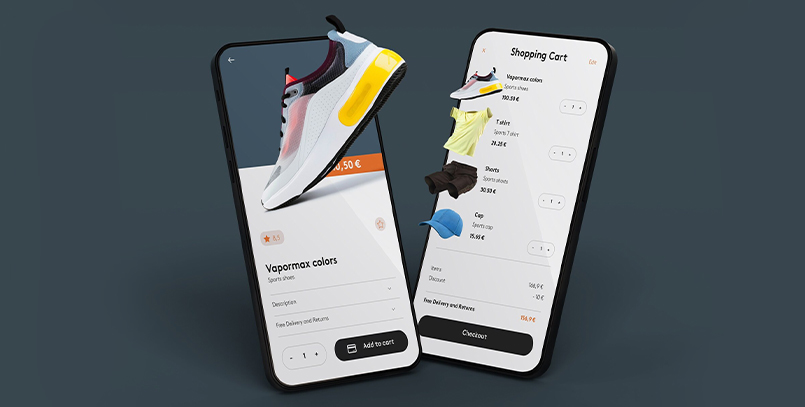Are you looking to elevate your online presence and boost your business growth? Look no…

Create the Perfect Shopify Website in Cincinnati: Expert Tips for Success
If you’re setting up a Shopify Website in Cincinnati for your business, you likely want to create a site that drives sales and engages customers. With Shopify being one of the most popular ecommerce platforms, you have amazing potential to build an effective online store. But it takes knowledge and skill to maximize your Shopify store’s performance.
In this post, I’ll share expert tips on crafting a high-converting Shopify website that fuels your ecommerce success. The knowledge you gain will benefits when working with a Shopify website designer or Shopify Website Developer in Cincinnati. These insights come from experienced Shopify designers, developers and specialists who work daily to create amazing stores. Let’s dive in!
Optimize for Speed
One non-negotiable for successful Shopify sites is fast page speeds. Research shows site speed directly impacts conversions and SEO. Shopify pros recommend optimizing speed through various best practices:
- Use lightweight themes to avoid bloated code
- Compress and properly size images
- Minimize HTTP requests and enable caching
- Integrate a content delivery network (CDN)
By staying on top of speed metrics in Shopify’s dashboard, you can catch any emerging page speed issues. Conduct regular performance checkups and improvements to provide a smooth experience. This can help you with Shopify Website Maintenance in Cincinnati as well.

CONTACT US
Focus on Mobile-Friendly, Responsive Design
Considering the dominance of mobile traffic today, Shopify experts emphasize building fully responsive, mobile-optimized stores. Google’s mobile-first indexing also means you must prioritize mobile experiences. This is one of the most important facts to consider during Shopify Website Design in Cincinnati.
Using responsive Shopify themes and elements designed for smaller screens is key. You want padding, fonts, buttons, and navigation that adapt seamlessly as screen sizes change. Shopify sites are inherently mobile-ready, but designers can still fine-tune for the best user experience.
Invest in Engaging Visual Design
While the back-end matters, visual design is what immediately catches customer eyes and draws them in. Shopify designers recommend focusing on elements like:
- High-quality, lifestyle product images
- Polished branding and graphics
- Stunning hero images
- Consistent fonts, colors, and style
- Thoughtful page layouts and UI design
Great visuals increase perceived trust and brand appeal. They also influence conversions by creating an immersive experience. Work with designers to realize your brand’s full visual potential.
Build an Intuitive User Experience
Beyond good looks, Shopify sites must deliver an intuitive user experience. Developers carefully plan UX, so customers easily find information, add items to cart, and complete purchases.
Elements like logical navigation menus, frictionless checkouts and clearly written product pages remove struggle from shopping. It takes expertise to craft a seamless UX that converts and delights customers.
Shopify developers will wireframe and test UX before build. They’ll also monitor for bugs post-launch and continually optimize the journey. The result is happy repeat customers.
CONTACT US
Choose Strategic App Integrations
With thousands of apps available, it’s tempting to add many to your Shopify site. But experts advise restraint, integrating only apps that solve problems. Apps should provide clear ROI, not just unnecessary features.
Developers audit their clients’ needs and integrate key apps purposefully. For example, apps for loyalty programs, email marketing, and reviews often provide high value. But not all apps live up to their promise, so choose carefully.
By being selective with apps, you can streamline operations, boost customer experience, and enable smarter merchandising. Let your developers guide you to the best options.
Optimize for SEO
Driving organic traffic from search engines is vital for Shopify stores. Shopify Experts in Cincinnati recommend optimizing your site for SEO through key strategies:
- Conduct keyword research to inform content and metadata
- Create SEO-friendly page titles, URLs, headings, and alt text
- Generate blog content and FAQs with relevant keywords
- Get backlinks from industry websites to improve domain authority
- Use structural data markup to help search bots understand your content
- Monitor site speed, mobile optimization, and other technical factors
By tapping into Shopify’s built-in SEO features and optimizing on-page and off-page elements, you can improve search visibility and earn more qualified organic traffic. SEO is a critical piece of the website puzzle.
The Bottom Line
Building a high-performing Shopify website takes skill and savvy. From back-end speed to engaging visuals and strategic features, every element matters. Working with experienced Shopify developers and designers is the best way to create a site positioned for revenue growth.
Use these tips as a guide as you craft your Shopify store. Optimize for conversions and customers, and you’ll be on the path to ecommerce success.




